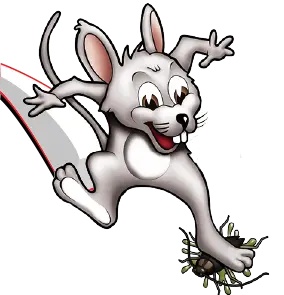Cockroaches: The Ultimate Unwanted Houseguests
Fast, sneaky, and nearly indestructible—cockroaches are the last thing you want scurrying across your kitchen floor. These tough pests can squeeze into the smallest cracks, thrive on nearly anything, and multiply quickly, making them a nightmare for homeowners and businesses alike. Worse yet, they carry bacteria, trigger allergies, and contaminate food wherever they roam. If you’re tired of playing hide-and-seek with these creepy crawlers, it’s time to show them the door!
Contact our amazing team today for expert cockroach control and take back your space—roach-free and worry-free!
Cockroach Control & Prevention
Cockroaches are amongst the most resilient and challenging pests to eliminate, they have been outliving dinosaurs, surviving ice ages, and adapting to nearly every environment on Earth for over 350 million years—and they are not planning on stopping anytime soon. These pests can live for a week without their heads, hold their breath for 40 minutes, and survive on almost nothing. While their resilience is impressive, it is the last thing you want inside your home or business. Once roaches settle in, they multiply rapidly, contaminate food, trigger allergies and they do not leave easily. Professional pest control is essential to fully eradicate an infestation and to evict these prehistoric intruders for good!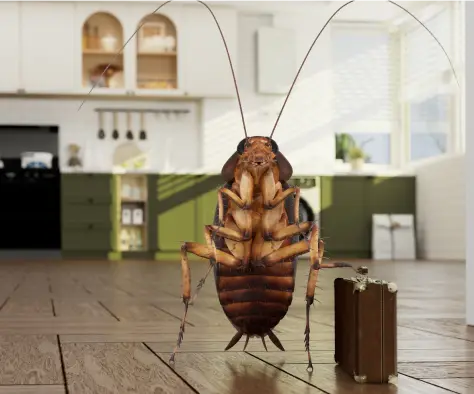 Comprehensive Site Inspection
Comprehensive Site Inspection
Every cockroach treatment starts with a thorough inspection of your home or business to:
- Locate high-activity areas and harborage sites
- Assess infestation severity using specialized monitoring tools
- Develop a realistic treatment plan based on infestation size and spread
Effective Cockroach Control Measures
Once we identify where cockroaches are hiding, we implement a scientifically proven approach to target all life stages—including eggs, nymphs, and adults. Our treatment plan may include:- Strategic bait placements to eliminate hidden populations
- Monitors and insect growth regulators to disrupt reproduction
- Additional control methods for hard-to-reach breeding sites
Ongoing Prevention & Maintenance
- Recurring treatments are strongly recommended for long-term cockroach control, as infestations can quickly rebound.
- In multi-unit buildings, treating all affected and surrounding units is essential, as cockroaches frequently travel through shared walls and plumbing.
Expert Cockroach Control Services
Cockroaches come in many shapes and sizes, but in the Pacific Northwest, German cockroaches are the most common troublemakers. These pests thrive in kitchens, bathrooms, and shared spaces, where they multiply rapidly and are notoriously difficult to eliminate once established. Their ability to hide in tiny cracks, reproduce quickly, and resist many DIY treatments makes professional pest control the best solution for long-term eradication.
Our comprehensive cockroach control services use a strategic, multifaceted approach to target infestations at every level—ensuring effective elimination and long-lasting protection.
- Quarterly & Bi-Monthly Programs
- Target Pests: Ants, spiders and various other crawling insects
-
Service Includes:
- Exterior perimeter inspection and application for crawling insect control
- Removal of accessible wasp nests on the structure of your home
- Sweeping of spider webs followed by an overhead application for spider control
- Interior services as needed
- Quarterly & Bi-Monthly Programs
- Target Pests: Rats, mice, ants, spiders and various other crawling insects.
Service Includes:
- Exterior perimeter inspection and application for crawling insect control
- Removal of accessible wasp nests on the structure of your home
- Sweeping of spider webs followed by an overhead application for spider control
- Service exterior rodent bait stations and inspect for potential entry points
- Interior services as needed
- Quarterly & Bi-Monthly Programs.
- Target Pests: Rats & Mice.
-
Service Includes:
- Exterior perimeter inspection for potential entry points, nesting areas or food sources.
- Seal up identified entry points to prevent the rodents from accesses the interior of your home.
- Service exterior and interior rodent bait stations.
- Interior services as needed.
Identification
Cockroach Identification
With over 4,000 species of cockroaches worldwide, these pests have adapted to nearly every environment. Some of the most well-known include the American cockroach, brown-banded cockroach, smoky-brown cockroach, and even the Madagascar hissing cockroach
However, in Oregon and Washington, the most commonly encountered species are:
German Cockroach – The most prolific indoor roach, frequently found in kitchens, bathrooms, and other areas with food and moisture. These cockroaches reproduce rapidly, develop resistance to many insecticides, and are one of the most difficult pests to eliminate.
Oriental Cockroach – Also known as “water bugs,” these cockroaches prefer damp, dark environments such as basements, crawlspaces, and drains. They are larger, darker, and slower-moving than German cockroaches but can still be a major nuisance.
American Cockroach – One of the largest cockroach species, growing up to 2 inches in length. They are reddish-brown with a yellowish figure-eight pattern on their head. American cockroaches thrive in sewers, drains, and warm, humid spaces, making them more common in commercial buildings, restaurants, and industrial areas. Though they prefer outdoor environments, they will invade homes in search of food and moisture.
Each species has unique behaviors and habitat preferences, making accurate identification crucial for effective treatment and long-term control.
German Cockroach: The Most Common Indoor Invader
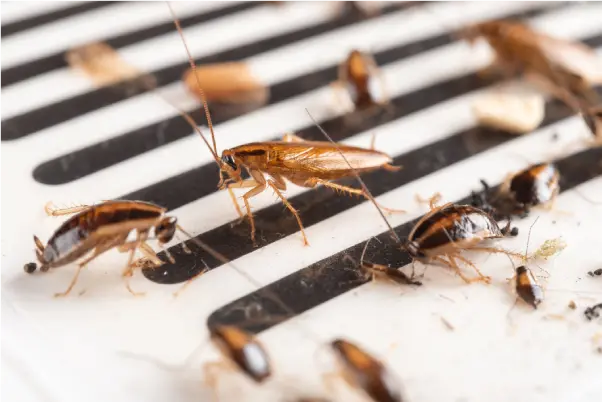 The German cockroach (Blattella germanica) is the most common roach species found in homes and businesses in Western Washington. Known for their rapid reproduction and resistance to many insecticides, they can quickly turn a minor problem into a full-blown infestation if left unchecked.
The German cockroach (Blattella germanica) is the most common roach species found in homes and businesses in Western Washington. Known for their rapid reproduction and resistance to many insecticides, they can quickly turn a minor problem into a full-blown infestation if left unchecked.
How to Identify a German Cockroach:
- Size: Small, measuring ½ to ⅝ inch (12-15 mm) in length
- Coloration: Light tan to brown with two dark parallel stripes running down their back
- Body Shape: Flat, oval-shaped body with long antennae
- Wings: Fully developed but rarely used for flight—they prefer to run
- Habitat: Found near warmth, moisture, and food sources—most commonly in kitchens, bathrooms, and shared living spaces
Why Are German Cockroaches So Hard to Control?
Rapid Reproduction: A single female can produce up to 400 offspring in her lifetime (less than a year). She carries her egg case until it’s ready to hatch, giving her young a higher survival rate.
- Disease Carriers: German cockroaches spread bacteria like Salmonella and E. coli, contaminating food and surfaces.
- Allergy & Asthma Triggers: Their shed skins, feces, and saliva have been linked to childhood asthma and allergy flare-ups.
- Difficult to Eradicate: They are highly adaptable and often develop resistance to common insecticides, making professional treatment essential for long-term control.
The longer an infestation persists, the more difficult and time-consuming it is to eliminate. If you spot even one German cockroach, don’t wait—contact us today for expert identification and eradication!
Oriental Cockroach: The High Mositure Roach
The Oriental cockroach (Blatta orientalis) is a larger, slow-moving species that prefers outdoor environments but may occasionally find its way inside. Unlike the fast-running German cockroach, Oriental cockroaches are less agile and rely on damp, high-moisture areas to survive.
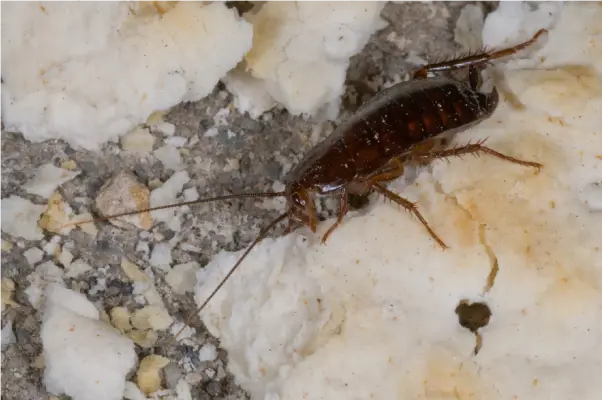 How to Identify an Oriental Cockroach:
How to Identify an Oriental Cockroach:
- Size: Larger than most roaches, measuring ¾ to 1¼ inches (19-32 mm) in length
- Coloration: Dark brown to black, giving them a glossy, almost oily appearance
- Body Shape: Flattened, oval body with a more rounded appearance than other roach species
- Wings:
- Males have short wings that cover about ¾ of their body but cannot fly
- Females have very short wing stubs and are completely wingless
- Movement: Slower and more sluggish compared to other cockroaches
Where You’ll Find Oriental Cockroaches:
- Sewers, drains, and damp crawlspaces – They thrive in moist, dark environments
- Under rocks, woodpiles, and thick vegetation – Common outdoor hiding spots
- Garages, basements, and sheds – Occasionally wander in but struggle to survive indoors
- Bathrooms, kitchens, and sinks – May enter through drains, especially if water traps dry out
Why Oriental Cockroaches Are Less Likely to Infest Homes:
- They require constant moisture to survive, making dry indoor environments inhospitable
- If you find one inside, it’s often close to dying due to dehydration
- They may accidentally wander into garages or sheds and become trapped
While Oriental cockroaches rarely establish infestations indoors, seeing them frequently around your home may indicate a larger outdoor population. If you’re spotting them more often, contact us for expert control and prevention!
American Cockroach: The Sewer System Roach
The American cockroach (Periplaneta americana) is the largest common cockroach species found in homes and businesses. Unlike German and Oriental cockroaches, American roaches prefer warm, humid environments and are often found in sewers, basements, commercial kitchens, and industrial areas. Though they can invade homes, they are more common in restaurants, warehouses, and large buildings.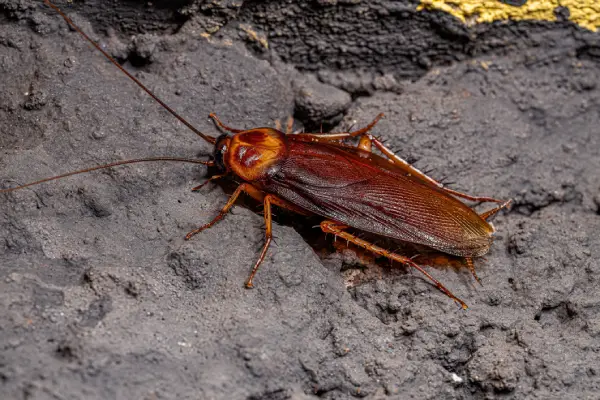 How to Identify an American Cockroach:
How to Identify an American Cockroach:
- Size: One of the largest cockroach species, measuring 1½ to 2 inches (38-50 mm) in length
- Coloration: Reddish-brown with a yellowish figure-eight pattern on the head
- Body Shape: Long and oval-shaped, with a flattened body for squeezing into tight spaces
- Wings:
- Both males and females have fully developed wings
- They can fly but prefer to glide rather than sustain flight
- Movement: Fast runners that can startle homeowners when they dart across the floor
Where You’ll Find American Cockroaches:
- Sewers, drains, and utility tunnels – Thrive in humid, underground spaces
- Basements, boiler rooms, and crawlspaces – Common in commercial and industrial settings
- Kitchens, pantries, and food storage areas – Attracted to warmth, moisture, and food crumbs
- Bathrooms and laundry rooms – Found near leaky pipes and damp areas
Why American Cockroaches Are a Problem:
- Disease Carriers: They spread bacteria, pathogens, and allergens as they travel through sewage and food storage areas
- Food Contamination: Roaches feed on human food, pet food, and decaying organic matter, making them a major health concern
- Difficult to Control: They breed quickly and adapt easily, requiring professional treatment for long-term elimination
Risks
Risks of a Cockroach Infestation
Cockroaches are one of the most persistent and unsanitary pests found in homes and businesses. In the Pacific Northwest, the most common indoor culprit is the German cockroach, which thrives in kitchens, bathrooms, and shared living spaces. These roaches reproduce rapidly and are notoriously difficult to eliminate—and to make matters worse, recent studies show that they are developing resistance to many common insecticides, making professional pest control more crucial than ever.
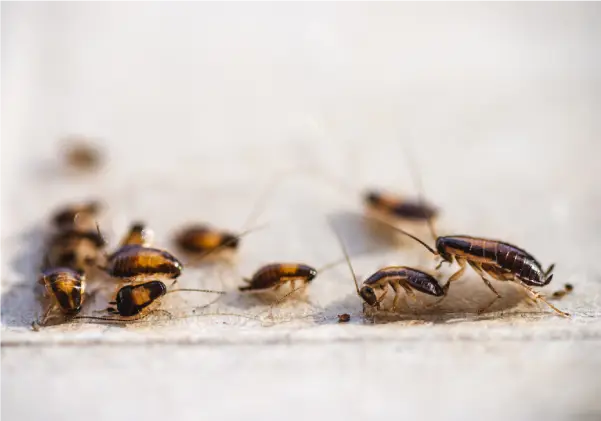 Why Cockroaches Are a Serious Health Risk
Why Cockroaches Are a Serious Health Risk
⚠️ Disease Carriers: Roaches spread bacteria like Salmonella and E. coli, contaminating food and surfaces.
⚠️ Allergy & Asthma Triggers: Their feces, shed skins, and decaying bodies worsen allergies and have been linked to asthma in children.
⚠️ Extreme Survivors: Cockroaches thrive in nearly any environment, making them one of the hardest pests to eliminate.
Unbelievable (and Unsettling) Cockroach Facts
- Cannibals & Coprophages: Cockroaches will eat their own dead—and even consume their own feces. Young roaches start life by feeding on adult droppings to gain essential bacteria.
- Oxygen Resilience: A cockroach can survive without air for up to 40 minutes and even withstand short periods of complete submersion in water.
- Rapid Growth: Some species, like the German cockroach, can go from newborn to adult in just 36 days—meaning infestations can explode in size quickly.
- Headless Survival: A cockroach can live for several days without its head, eventually dying of dehydration rather than injury.
- Longevity: Roaches can live for up to a year, constantly breeding and expanding their population.
If you suspect cockroach activity in your home or business, don’t wait until the problem gets out of hand—these pests multiply quickly and can be incredibly challenging to control. Call us today for expert cockroach elimination and prevention!
Effective Cockroach Control Methods
Cockroach infestations require a multi-step approach to ensure complete eradication. These pests are highly resilient, reproducing rapidly and adapting to many control methods. That’s why our treatment strategy involves a combination of mechanical, chemical, and preventative measures to eliminate roaches at all life stages.
Comprehensive Cockroach Treatment Plan
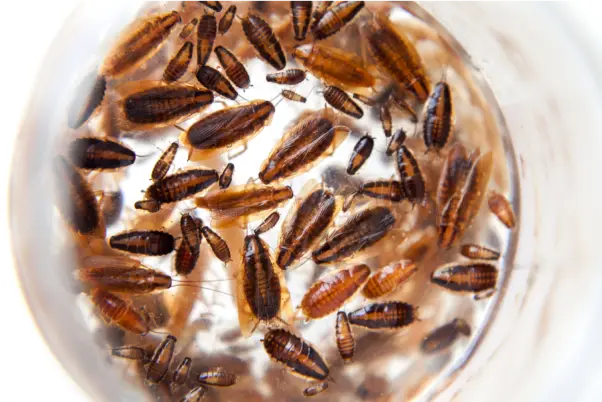 Mechanical Control
Mechanical Control
- Monitoring Devices & Glue Boards – Sticky traps help track cockroach activity and provide early detection of infestations.
- Vacuuming – A quick and effective way to physically remove roaches and their egg cases, significantly reducing the population.
Targeted Chemical Control
- Insect Growth Regulators (IGRs) – These prevent juvenile roaches from maturing into reproductive adults, effectively breaking the infestation cycle.
- Gel Baits – Strategically placed baits provide flexibility and faster results than traditional “roach motels,” attracting cockroaches and eliminating them at the source.
Sanitation & Prevention
- Eliminate Food Sources – Roaches will eat almost anything, including their own feces and even human toenail clippings. Reducing access to food is crucial for control.
- Improve Cleanliness – Proper sanitation, including removing crumbs, sealing food, and fixing moisture issues, helps eliminate attractants.
Ongoing Prevention & Recurring Treatments
- Roach infestations are rarely eliminated in a single treatment—recurring services ensure lasting control and prevent reinfestation.
- Multi-unit buildings require a coordinated approach, as roaches often travel through shared wall cavities and plumbing systems. Treating all affected and surrounding units is recommended for complete control.
Cockroach Prevention Tips
Preventing cockroach infestations is far easier than eliminating them once they take hold. By following these simple yet effective steps, you can help reduce the likelihood of an infestation and enhance the effectiveness of any professional pest control treatments.
Cockroach Prevention Tips
Preventing cockroach infestations is far easier than eliminating them once they take hold. By following these simple yet effective steps, you can help reduce the likelihood of an infestation and enhance the effectiveness of any professional pest control treatments.
Store Food Properly
- Keep all food items in airtight containers to prevent contamination.
- Regularly wipe down food storage areas to remove crumbs and spills.
Clean Up Spills & Crumbs Immediately
- Roaches thrive on even the smallest food particles—clean up spills and crumbs right away to remove potential food sources.
- Regularly sanitize countertops, stovetops, and food prep areas to eliminate grease buildup.
Wash Dishes & Tidy Up After Meals
- Dirty dishes left overnight are a feast for cockroaches—wash and put them away promptly.
- Keep pet food bowls clean and store food in sealed containers when not in use.
Reduce Clutter & Improve Organization
- Cockroaches love tight, dark hiding spots—declutter kitchen spaces, pantries, and storage areas.
- Avoid stacking papers, cardboard boxes, and unused items, which can become cockroach nesting sites.
Rotate & Inspect Stored Food Regularly
- Use the “First In, First Out” method to keep food fresh and avoid spoilage.
- Check dry goods for signs of pests, such as chew marks or insect activity, and discard contaminated items immediately.
Inspect Used Appliances & Furniture Before Bringing Them Inside
- Cockroaches often hide in used refrigerators, microwaves, stoves, and other appliances, especially if they’ve been stored in infested areas.
- Carefully check inside vents, behind panels, and within electrical compartments before bringing any secondhand appliances or furniture into your home or business.
- When in doubt, clean and treat used items before moving them indoors.
Avoid DIY Cockroach Control Efforts
- Over-the-counter sprays and foggers often scatter cockroaches rather than eliminate them, pushing them deeper into walls and hard-to-reach areas.
- Cockroaches are highly adaptable and can quickly develop resistance to many store-bought insecticides.
- Professional treatments target all life stages—including eggs, nymphs, and adults—to fully eradicate the infestation.
By staying proactive with these habits and relying on expert treatment, you can greatly reduce the risk of a cockroach infestation.

